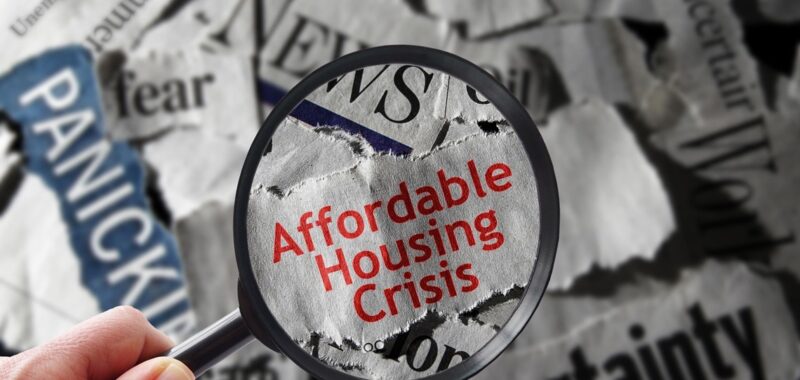“Give me your tired, your poor, your huddled masses yearning to breathe free.”
While the United States’ attitude toward immigration is far uglier and more complex than the sentiment expressed in the Emma Lazarus poem emblazoned on the Statue of Liberty, most Americans continue to believe that immigration is a good thing for the country.
But how is immigration related to a currently unaffordable and imbalanced housing market?
According to a new analysis by Harvard’s Joint Center for Housing Studies (JCHS), a recent surge in immigrants has definitely affected housing markets, but is in no way responsible for the price growth and inventory scarcity that has characterized the last three years.
“The timing of the recent surge in immigration…does not line up with the high growth in both rents and home prices that happened at the start of the pandemic,” wrote Riordan Frost, senior research analyst at JCHS. “Housing demand during the pandemic has been primarily shaped by native-born household growth in a time of constrained housing supply.”
With just under a week before the presidential election, housing issues have mostly been pushed to the margins of the Harris and Trump campaigns.
But Frost acknowledges a “policy conversation” about the relationship between immigration—which has been a centerpiece of both campaigns—and a housing market that experienced historic fluctuations across the last few years.
Notably, Republican senator and vice presidential candidate J.D. Vance claimed last month during a debate that “illegal immigrants” are “one of the most significant drivers of home prices” in the current market.
That just isn’t true, according to Frost, who pointed at data showing that surging immigration just doesn’t line up with the trends in home prices and affordability.
For instance, immigration reached a historic peak in 2022 and 2023, according to the Congressional Budget Officer, with 5 million new immigrants across that 24-month span. But home prices and rents saw their largest increases in 2020 and 2021, when there were less than 2 million new immigrants.
Additionally, 75% of new household formations were native-born between 2019 and 2023, according to Frost, a much higher proportion than in year’s past, meaning that immigrants made up a smaller share of new households even as their numbers surged.
“It is true that immigrants play an important role in household growth and housing demand,” Frost said. “(F)oreign-born householders accounted for 50% of household growth from 2010-2015 amid weak native-born household formation after the Great Recession.”
But it was native-born Americans who drove the pandemic boom, Frost said, as low interest rates and pent-up demand by a ballooning generation of millennials pushed housing prices up and grappled over limited inventory.
Immigration, Frost noted, is also extremely important to creating more desperately needed inventory, with immigrants making up around 34% of construction trade workers last year. States with some of the highest levels of housing demand and biggest inventory shortages had even larger shares of immigrant construction workers—52% in California and New Jersey, 51% in Texas and 50% in Maryland.
Despite this, Americans have increasingly seen the current levels of immigration as too high, and both presidential candidates have said they will seek to curb new entries into the country, with former president Donald Trump going much further and promising mass deportations (relying on the same 18th century law that allowed internment of Japanese Americans during World War II).
“While the recent surge in immigration is difficult to absorb in the short term, immigrants are and will continue to be an important source of future economic growth,” Frost said. “Absent immigration, household growth will slow markedly over the next decade, significantly dragging down economic growth.”

